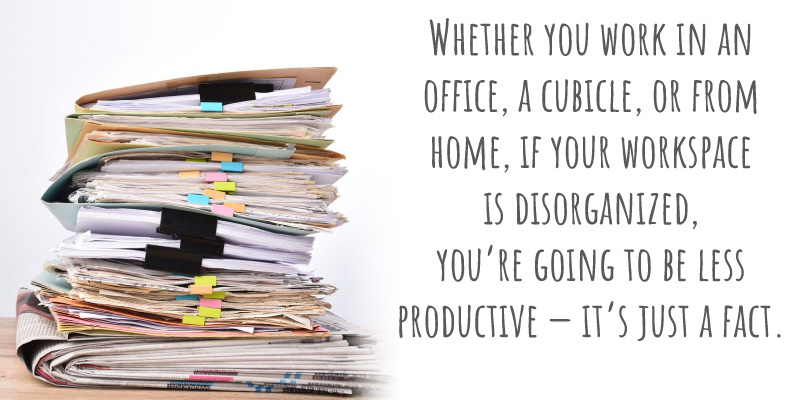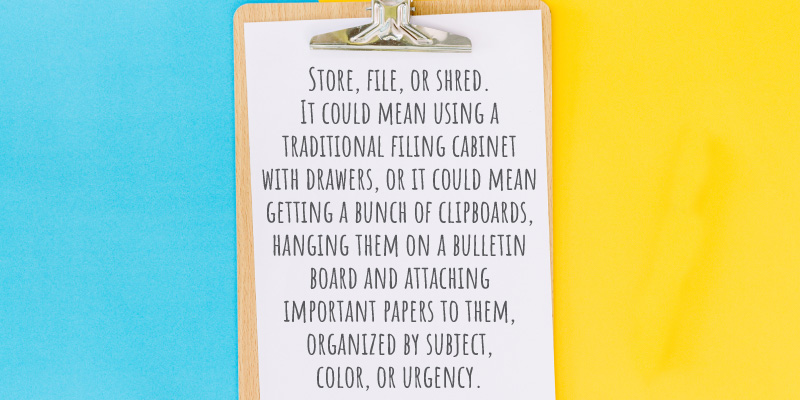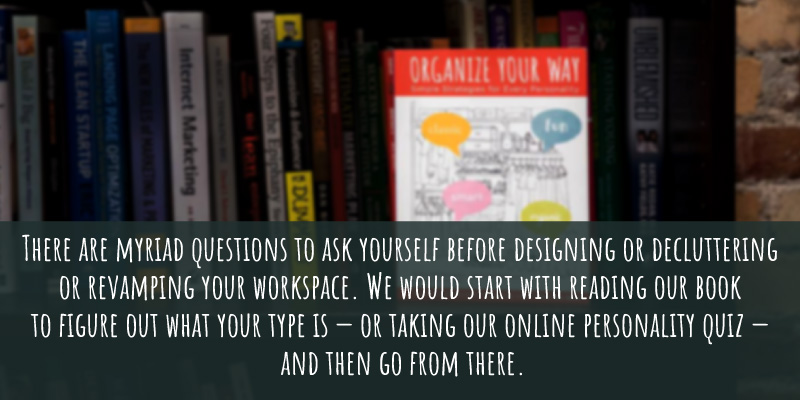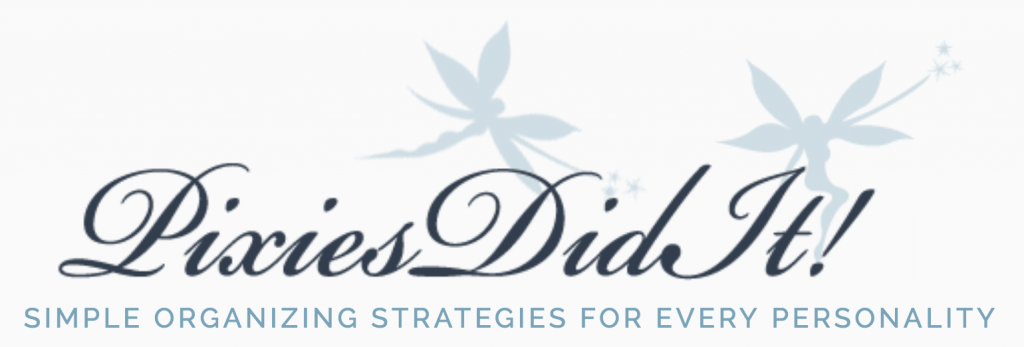Working It: Getting Your Workplace Organized for Maximum Efficiency

Whether you work in an office, a cubicle, or from home, if your workspace is disorganized, you’re going to be less productive — it’s just a fact. Think about how much paper comes through your desk on a daily basis: there are sticky notes, notebooks, and calendars — and those are just tools for you. Think, now, about all the other paperwork put onto your desk by others (particularly if you are in an administrative or office assistant role). Easy to start feeling overwhelmed, right?
We are here with some tips to help you get organized — whether you work from a corner office or a cubicle.
Useful and Creative Organizational Items
- Like (or need) your morning coffee as much as you need oxygen? Get a cup holder that attaches to the edge of your desk and avoid dreaded spillage onto important paperwork and/or your MacBook.
- Reuse a bunch of cans by attaching some decorative wrapping or other kind of paper around them. Voila! A cool place to store things like scissors and writing utensils. (Not only will they look great, but you’re essentially recycling and reusing, which is more than just great, it’s fabulous.)
- If you’re more the utilitarian type, cover them in chalkboard paint, (who knew such a thing existed?), label them with chalk pens according to what you want to fill them with, and you’ve got a neat little home for your office supplies — pencils, paper clips, stapler.
- Hang a hook under your desk to keep all of your cords out from underfoot.
- Use clipboards and attach them to the wall to hang loose pieces of paper, large or small. Organize the boards according to subject, urgency, etc.
- Are you crafty? Try this on for size: create a mini charging station for your cell phone using a baby oil bottle!
(And some modge podge: ie, glue, and some pretty tissue paper). Directions are here. - Use pegboards when possible, and attach baskets to it to organize papers and notecards.
- Use a dish rack as a last minute, mini filing system.
You’ll also need things like a trash bin and paper shredder, but those aren’t as fun (unless you like the crunching noise the paper makes as it goes through the shredder.)
Step-by-Step Workspace Organization
In order to organize your workspace, you need to break the space down into parts.
-What to do with paper and paperwork?

Store, file, or shred. This means getting some kind of filing cabinet or creating a filing system that works for you. It could mean using a traditional filing cabinet with drawers, or it could mean getting a bunch of clipboards, hanging them on a bulletin board and attaching important papers to them, organized by subject, color, or urgency. It could even mean using a dish rack (clean, of course) to store your smaller papers in. This option is perfect for Pixie types who need to see things to remember them (Organic and Smart Freedoms, for example).
-What to do with E-files?
Either make them the rule or the exception. In other words, set up a system where you decide what to keep and digitize it accordingly. Be sure to always backup your work on a hard drive if you work from home.
-What to do with your actual workspace to make it more conducive to productivity?
Well, think about what you do in a day. Consider keeping items you use often in close proximity for easy access. Get a filing system you can live with (whether it’s a dish rack or traditional steel one). Consider, too, the way you handle clutter and the type of environment you work best in. For more information on this, check out our book on Amazon, which will tell you all about the way your personality shapes your organizational skill set, giving you the tools you need to get yourself (and your space) organized — your way!
And remember, unless you work in a corporate environment, you can have a bit of leeway when it comes to designing the space in the way it will best work for you. Have some fun! Upholster your office chair in green polka dot or toile print! Use your favorite pens. Personalize. It helps many more creative types feel more ‘at home’ in their offices. And that alone can help certain types with productivity.
However, if you’re more of a Classic Structure type, you might thrive in a more sparse and aligned environment. Clean desk with only the essentials on it, and everything else stored away. It all depends on your personality and preferences. Some questions to ask yourself before setting up your workspace are:
-When am I most productive?
-When do I feel most motivated/inspired?
-What kind of work do I do, and how can I best support that in my space?
-Does the work I do demand a certain lack of clutter and organizational adeptness?
-If I work from home, what are some of the ways I can stay on task and not get distracted?

There are myriad questions to ask yourself before designing or decluttering or revamping your workspace. We would start with reading our book to figure out what your type is — or taking our online personality quiz — and then go from there.
